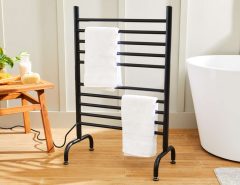If you want to restore the original look of your tub, there are some simple steps you can take to do so. A sparkling plastic bathtub will add a touch of luxury to any bathroom and make it feel more like a spa retreat than an everyday space.
How to restore a plastic bathtub?
Follow the steps below to restore your plastic bathtub:
Clean the tub surface
You have to get rid of the dirt, grease and other contaminants before you can begin restoring your tub. The easiest way to do this is with mild soap and water. Use a scrub brush to remove any dirt on the surface of your tub, then dry it with a towel or paper towel so that it’s completely dry.
Once you’ve cleaned your plastic bathtub, use a plastic cleaner to disinfect and buff away any residue from the cleaning process. Make sure not to use too much pressure when applying this product because it can damage your tub if applied incorrectly. It’s best if you spray some onto a rag or sponge before rubbing down your bathtub until cleanliness is achieved.
Remove all surface stains
Now that you’ve cleaned your bathtub, it’s time to remove any stains or scratches. Use a soft cloth to wipe away surface stains, and if you have stubborn ones, use a sponge dampened with warm water and mild detergent. If there are still stubborn marks after this initial cleaning, try using a plastic cleaner. These are usually safe for most bathtubs but be sure to check the label first! If all else fails, give your tub an overall clean with some household cleaner and then follow up again with another application of the plastic cleaner.
Finally, don’t forget about those pesky scratches! Try a plastic restorer such as Turtle Wax Plastic Polish or Armor All Protectant and Polish; these products are specifically made for restoring the shine on your bathroom fixtures without damaging them further (Turtle Wax also makes some great automotive products).
Wipe away remaining stains
Now that the bathtub is clean, you may be wondering how to get rid of any remaining stains. This can be done by using a damp cloth or sponge with a little bit of plastic cleaner. However, it’s important to avoid using paper towels because they will scratch the surface and make cleaning more difficult in the future.
If there are spots left after you have used your damp cloth or sponge, try using a small amount of rubbing alcohol on an old toothbrush to gently scrub at them until they come off. If this doesn’t work, try putting some white vinegar in a spray bottle and spraying it directly on the stain before washing again with soap and warm water.
Scrub the tub to remove surface blemishes
To remove surface blemishes from the tub, use a scrub brush and plastic cleaner. Plastic cleaners are designed to restore the shine of your tub, so they’re gentle and won’t damage it as much as other abrasives. Work in small sections to avoid accidentally taking off too much of your hard work.
Use baking soda and a scrub brush for tough spots
If your bathtub is scuffed and dirty, use a scrub brush to get rid of stubborn marks. Dip the scrub brush in baking soda and start at one end of the tub. Use firm strokes up and down the surface of your bathtub while applying pressure. Repeat this process until you have removed all marks on your plastic bathtub’s surface.
Baking soda can also be used alone to remove surface stains from your plastic tub. You should apply baking soda to a wet sponge or cloth then rub it into any stained areas before rinsing with soapy water and drying off with a towel to prevent discoloration from occurring over time if left untreated for too long (such as overnight).
Remove stubborn marks with a plastic cleaner
If your tub is very dirty and has stubborn marks, it may be time to get out the plastic cleaner.
This type of cleaner is safe for use on plastic surfaces and won’t damage them like regular dish detergent or bathroom cleaners can. Use a mildewcide degreaser that will kill off any unwanted bacteria too.
Apply a plastic restorer to the entire tub surface
Once you have cleaned the surface of your tub, apply a plastic restorer to the entire tub surface. Let it sit for a few minutes to allow it to penetrate and then wipe away with a soft cloth. You may need to repeat this process several times if your tub isn’t in good shape or has stood unused for an extended period of time.
Conclusion
The methods for restoring a plastic bathtub are simple and straightforward. The key thing is to make sure that you’re working with the right products for the job. You don’t want to use a harsh chemical on your tub because it could cause more damage than good!




